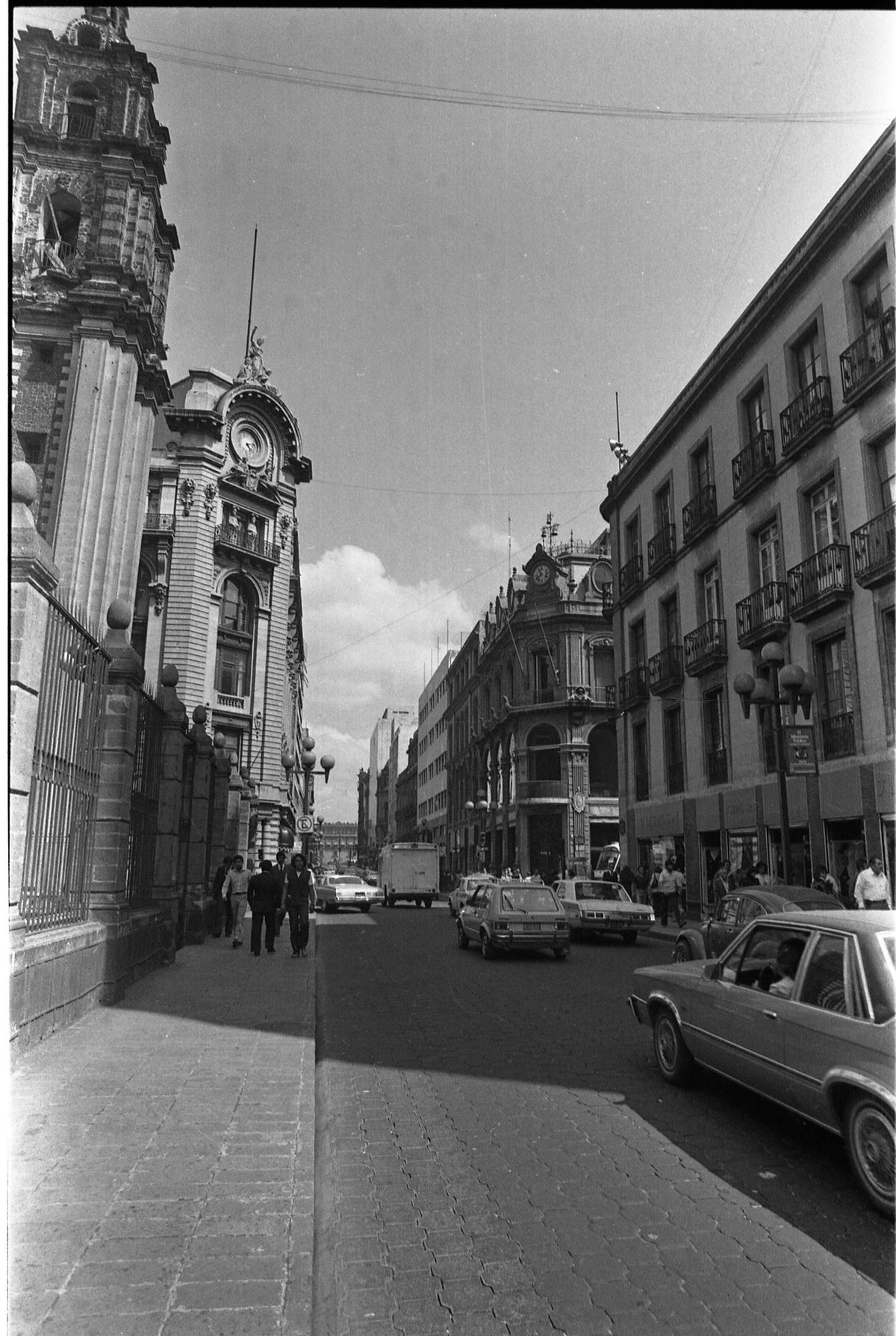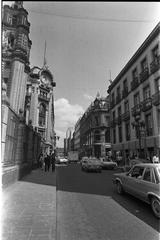
Madero Avenue Mexico City: Visiting Hours, Tickets, and Historical Sites Guide
Date: 14/06/2025
Introduction
Madero Avenue, officially Avenida Francisco I. Madero, is one of Mexico City’s most emblematic and vibrant pedestrian streets. Connecting the iconic Zócalo (main square) with the Torre Latinoamericana, this historic thoroughfare weaves together centuries of cultural heritage, architectural splendor, and dynamic urban life. From its origins atop the ruins of the Aztec capital, Tenochtitlan, to its current status as a bustling social, commercial, and cultural axis, Madero Avenue offers an immersive journey through Mexico City’s layered history.
As a fully pedestrianized zone since 2009, Madero Avenue is safe, accessible, and welcoming to all. Along its 700-meter stretch, you’ll find colonial palaces, baroque churches, contemporary skyscrapers, museums, traditional eateries, and lively street performances. Whether you’re a history aficionado, architecture lover, or casual traveler, this guide provides all the essential information to explore Madero Avenue’s landmarks, visiting hours, ticketing, accessibility, travel tips, and nearby attractions.
For further details, interactive maps, and the latest updates, consult the official tourism websites and consider downloading the Audiala app to enhance your visit (Madero Avenue Mexico City: Visiting Hours, Tickets, History & Travel Tips, Madero Avenue Mexico City: Visiting Hours, Tickets, and Cultural Highlights, Exploring Madero Avenue: Visiting Hours, Tickets, and Historical Landmarks in Mexico City).
Table of Contents
- Introduction
- Origins and Historical Evolution
- Colonial and Religious Significance
- Madero Avenue in the 19th and 20th Centuries
- Architectural and Cultural Landmarks
- Visiting Hours and Ticket Information
- Accessibility
- Guided Tours and Cultural Events
- Best Photographic Spots
- Nearby Attractions
- Visitor Tips and Safety
- Frequently Asked Questions (FAQ)
- Conclusion
- References
Origins and Historical Evolution
Madero Avenue’s roots reach back to the 16th century, when Spanish architect Alonso García Bravo designed it atop Tenochtitlan’s ruins. Initially known as Calle de Plateros due to the silversmiths operating there, it quickly became a central artery linking the city’s religious, political, and commercial sites. Over the centuries, Madero Avenue witnessed colonial processions, the emergence of grand palaces, and the city’s ever-changing social landscape.
The street was renamed in 1911 after Francisco I. Madero, hero of the Mexican Revolution and former president, following the occupation of Mexico City by Pancho Villa and Emiliano Zapata. Villa’s symbolic act of replacing the street sign cemented Madero Avenue’s link to national memory and revolutionary history.
Colonial and Religious Significance
Madero Avenue is home to several landmarks reflecting its colonial and spiritual heritage:
- Convent of San Francisco: Built on the site of Moctezuma II’s zoo, this Franciscan complex was a key center for evangelization and hosted major historical events, including Hernán Cortés’s funeral and Independence celebrations.
- Church of San Francisco: The only surviving part of the original monastery, rebuilt in the 18th century with a richly adorned Baroque façade.
The avenue was also a ceremonial route for religious processions and pivotal in the city’s spiritual life.
Madero Avenue in the 19th and 20th Centuries
During the 19th century, Madero Avenue flourished as a commercial and social hub:
- Casa de los Azulejos: Became the headquarters of the elite Jockey Club.
- Early Cinema: Hosted Mexico’s first cinema screening in 1896, introducing the Lumière Brothers’ invention.
- Modernization: The construction of Torre Latinoamericana in the 1950s marked the avenue as a symbol of Mexico City’s resilience and modernization.
Pedestrianization in 2009 transformed Madero into a vibrant, accessible public space, attracting up to half a million visitors daily.
Architectural and Cultural Landmarks
Casa de los Azulejos (House of Tiles)
A stunning 18th-century Baroque palace, famous for its blue-and-white Talavera tiles from Puebla. Now a Sanborns restaurant, it features ornate interiors, a grand staircase, and stained-glass windows.
- Hours: Daily, 8:00 AM – 10:00 PM (restaurant)
- Tickets: Free entry; dining prices vary
Torre Latinoamericana
A 44-story modernist skyscraper renowned for surviving major earthquakes. The observation deck offers panoramic city views.
- Hours: Daily, 9:00 AM – 8:00 PM (observation deck)
- Tickets: ~150 MXN for adults
Palacio de Iturbide
A masterpiece of New Spanish Baroque architecture, once the residence of Emperor Agustín de Iturbide and now home to temporary art exhibits.
- Hours: Tuesday–Sunday, 10:00 AM – 6:00 PM
- Tickets: Free
Metropolitan Cathedral
The largest cathedral in the Americas, blending Renaissance, Baroque, and Neoclassical styles. Its sinking foundations reflect the city’s ongoing challenges.
- Hours: Daily, 8:00 AM – 8:00 PM
- Tickets: Free
Templo Mayor Ruins
Just off Madero Avenue, these Aztec temple ruins and adjacent museum provide a window into pre-Hispanic Mexico.
- Hours: Tuesday–Sunday, 9:00 AM – 5:00 PM
- Tickets: ~85 MXN; discounts for students/seniors
Church of San Francisco
The last remnant of the vast Franciscan monastery, featuring ornate Baroque design.
- Hours: Daily, 7:00 AM – 7:00 PM
- Tickets: Free
Temple of La Profesa
A Jesuit church with a sober Baroque exterior and rich interior altarpieces, significant in Mexico’s independence movement.
- Hours: Monday–Saturday, 8:00 AM – 1:00 PM, 5:00 PM – 7:00 PM
- Tickets: Free
Museo del Estanquillo
Displays the eclectic personal collection of writer Carlos Monsiváis, including art, toys, and photographs.
- Hours: Tuesday–Sunday, 10:00 AM – 6:00 PM
- Tickets: Free
Visiting Hours and Ticket Information
- Madero Avenue: Open 24/7 as a public pedestrian street.
- Landmark hours: Vary by site; typically open between 8:00–10:00 AM and close by 6:00–8:00 PM.
- Tickets: The avenue is free to access. Individual attractions like Torre Latinoamericana and Templo Mayor require tickets; most churches and museums are free or have nominal fees.
- Best visiting times: Early morning or late afternoon for fewer crowds; weekdays are quieter than weekends.
Accessibility
Madero Avenue’s pedestrianization ensures smooth, step-free pavement suitable for wheelchairs and strollers. Major attractions, such as Torre Latinoamericana and Museo del Estanquillo, offer elevators. Some historic buildings may have limited accessibility due to their age. Metro stations Zócalo and Bellas Artes are nearby and wheelchair accessible.
Guided Tours and Cultural Events
- Guided Walking Tours: Several local operators offer tours focused on history, architecture, and gastronomy along Madero Avenue and the Centro Histórico.
- Cultural Events: Festivals like Día de los Muertos, Independence Day, and Christmas transform the avenue with decorations, parades, and performances. Street art and live music are common year-round.
- Special Exhibitions: Check local event calendars or museum websites for temporary shows and public art installations.
Best Photographic Spots
- The blue-and-white façade of Casa de los Azulejos
- Panoramic cityscapes from the Torre Latinoamericana
- Baroque details of Palacio de Iturbide
- Bustling street scenes capturing the city’s energy
Nearby Attractions
- Zócalo: The main square surrounded by historic sites
- Bellas Artes Palace: Renowned for its architecture and cultural performances
- National Palace: Features Diego Rivera murals; government seat
- Templo Mayor Museum: Aztec ruins and artifacts
- La Ciudadela Market: Artisanal crafts and souvenirs
Visitor Tips and Safety
- Dress Comfortably: Wear sturdy shoes for cobblestone streets and layered clothing for changing weather.
- Stay Alert: Pickpocketing can occur during peak times—keep valuables secure.
- Hydrate and Rest: Mexico City’s altitude can affect visitors; drink water and take breaks.
- Use Public Transit: Metro and Metrobús provide easy access; avoid driving due to limited parking.
- Cultural Etiquette: Greet shopkeepers and staff; tipping 10–15% in restaurants is standard.
- Language: Basic Spanish phrases are helpful; most tourist areas have English-speaking staff.
- Health and Weather: Use sunscreen, check air quality, and carry an umbrella during rainy season.
Frequently Asked Questions (FAQ)
Q: What are Madero Avenue’s visiting hours?
A: The street is open 24/7. Individual attractions usually open between 8:00–10:00 AM and close by 6:00–8:00 PM.
Q: Is there an entry fee to Madero Avenue?
A: No, access is free. Some nearby attractions require tickets.
Q: Are guided tours available?
A: Yes, many operators offer guided walking tours of the avenue and surrounding sites.
Q: Is the avenue accessible for people with disabilities?
A: The street is generally accessible; some historic buildings may have limited access.
Q: Is Madero Avenue safe?
A: It’s one of the safer areas in Centro Histórico, but stay alert for petty theft in crowded places.
Conclusion
Madero Avenue is a living tapestry of Mexico City’s past and present, blending architectural grandeur, historical landmarks, and lively urban culture. Its pedestrian-friendly layout, easy access to public transportation, and wealth of attractions make it a must-visit destination. Whether you are exploring colonial palaces, sampling local cuisine, or joining in a festival, Madero Avenue offers a memorable experience for every visitor.
Maximize your trip by planning around landmark hours, considering guided tours, and staying informed with local event calendars. For updates, detailed itineraries, and immersive digital guides, download the Audiala app and follow official social media channels.
Continue your journey through Mexico City’s rich heritage by reading our related guides and exploring virtual tours of historical sites (Madero Avenue Visiting Hours, Tips & Attractions in Mexico City’s Historic Center, Madero Avenue Mexico City: Visiting Hours, Tickets, History & Travel Tips).
References
- Madero Avenue Mexico City: Visiting Hours, Tickets, History & Travel Tips
- Madero Avenue Mexico City: Visiting Hours, Tickets, and Cultural Highlights
- Exploring Madero Avenue: Visiting Hours, Tickets, and Historical Landmarks in Mexico City
- Madero Avenue Visiting Hours, Tips & Attractions in Mexico City’s Historic Center
- Time Out Mexico City
- The Broke Backpacker
- Pilot Plans











































































































































































